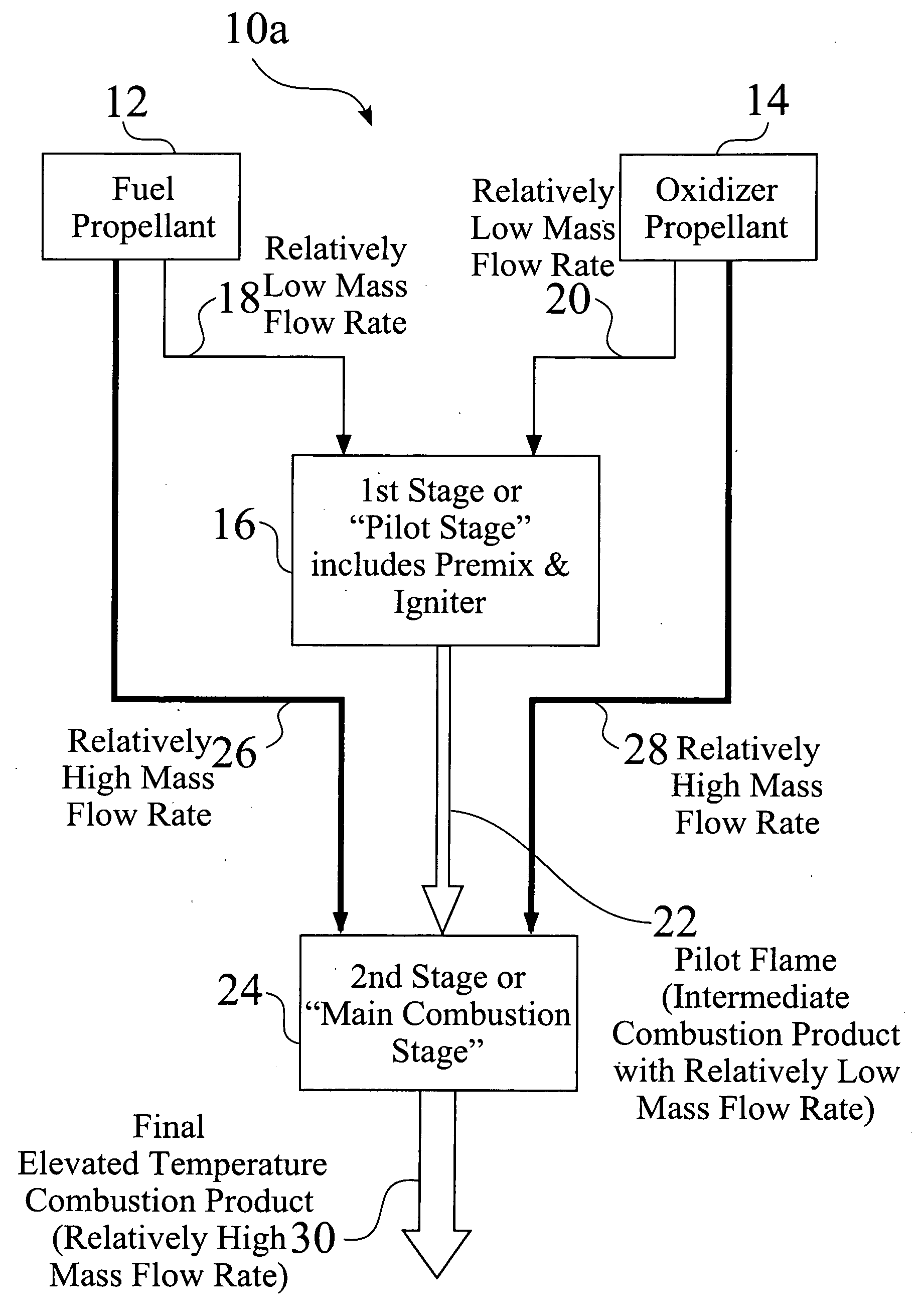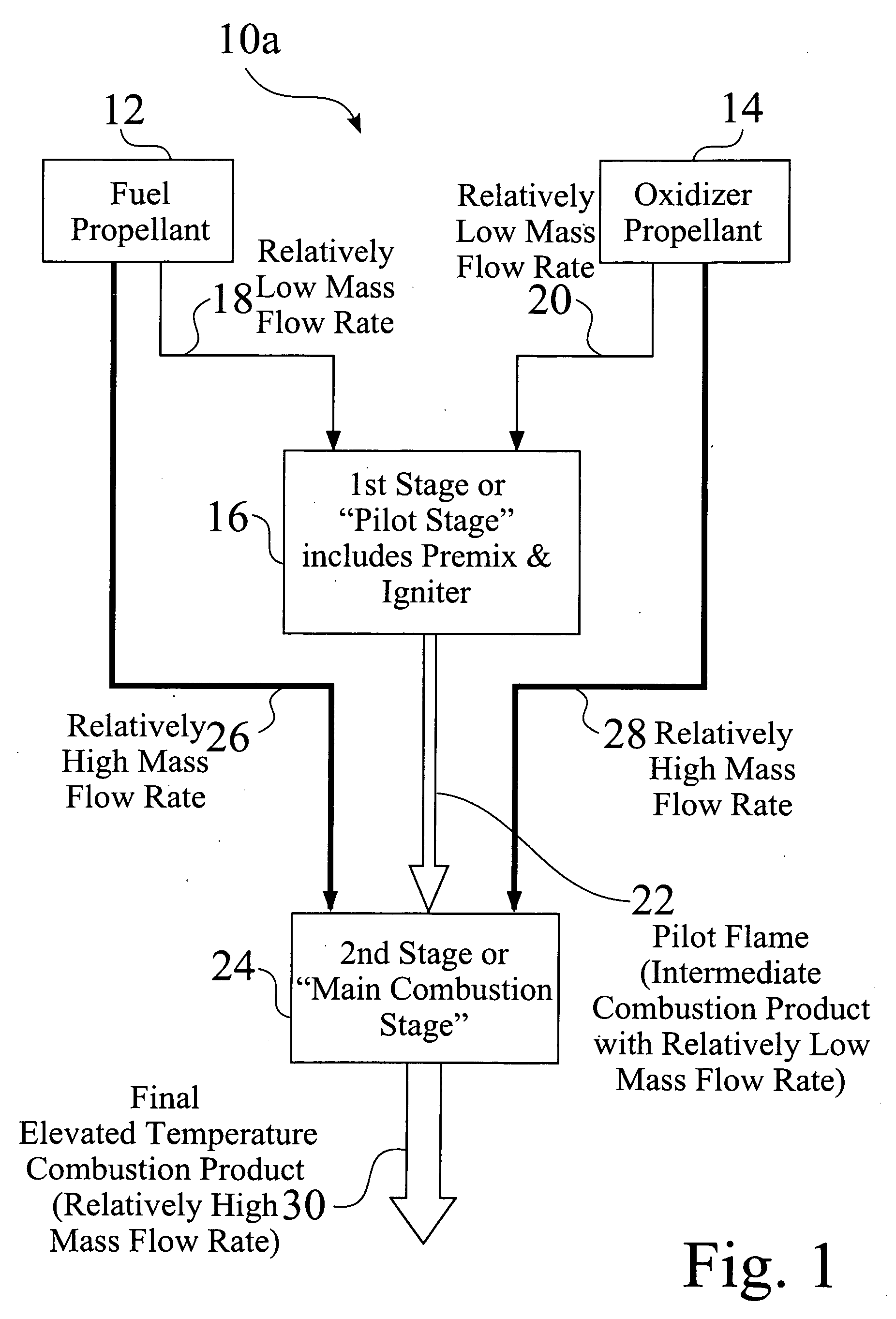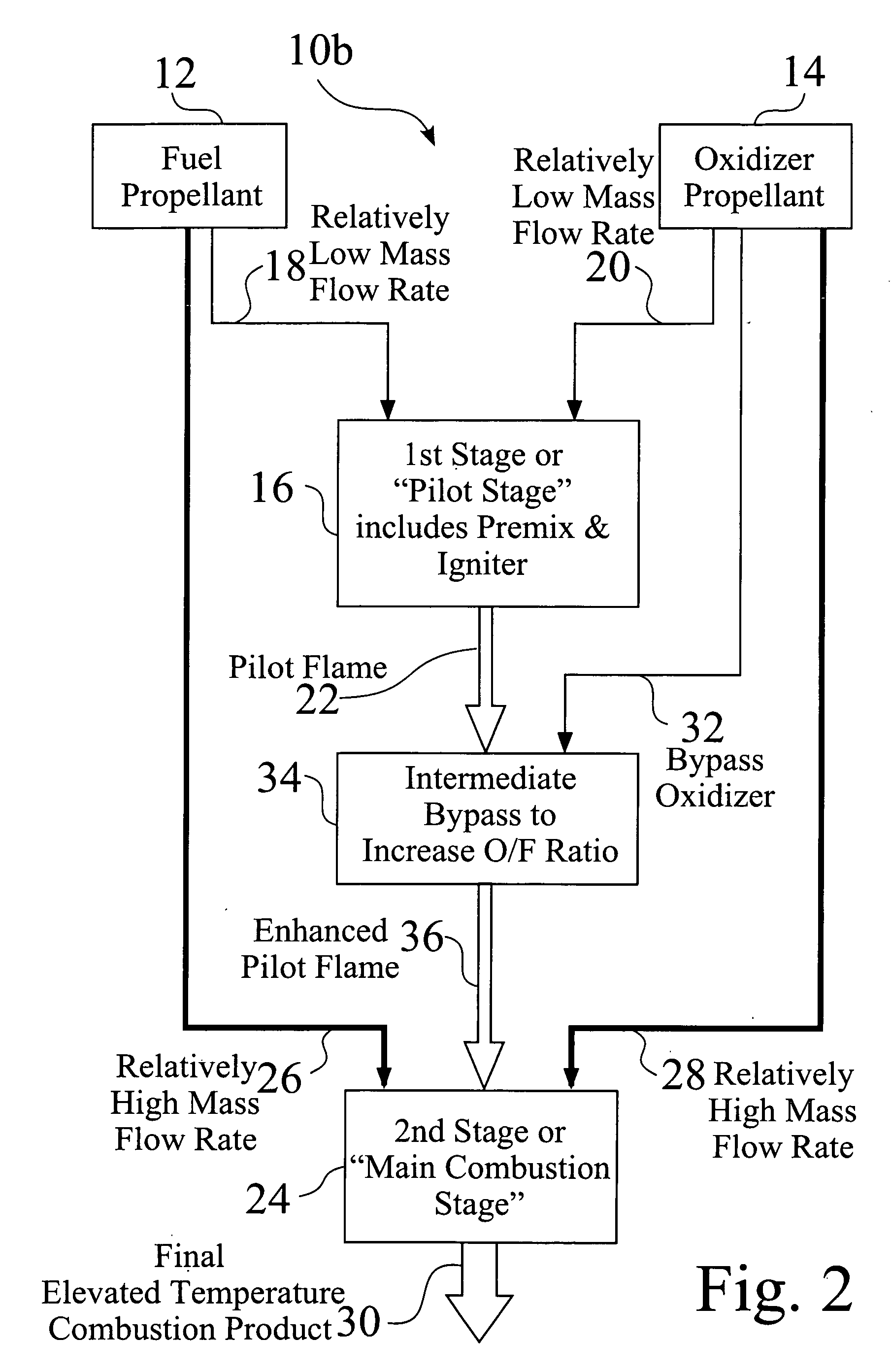Two-stage ignition system
a two-stage ignition and gas flow technology, applied in the direction of rocket engine plants, machines/engines, anti-theft devices, etc., can solve the problems of failure of the method to produce the final elevated temperature combustion product, failure of the payload in a useless orbit, and catastrophic loss of the payload, so as to improve the overall ignition system reliability, increase the operational life, and reduce the stress on the igniter
- Summary
- Abstract
- Description
- Claims
- Application Information
AI Technical Summary
Benefits of technology
Problems solved by technology
Method used
Image
Examples
Embodiment Construction
I. Overview of the Invention
[0028]One embodiment of the present invention comprises a two-stage ignition method for creating a flow of elevated temperature combustion product using bipropellants. In one particular embodiment, the invention utilizes two different ignition stages, a “pilot stage,” which ignites relatively low mass flow rates of bipropellants to create a pilot flame, and a “main combustion stage,” which utilizes the pilot flame to ignite relatively high mass flow rates of bipropellants to produce a flow of elevated temperature combustion product.
II. Preferred & Alternative Embodiments of the Invention
[0029]FIG. 1 is a flow chart which illustrates one particular embodiment 10a of the invention. A fuel propellant 12 and an oxidizer propellant 14 are introduced into a first or pilot stage 16, where the propellants are pre-mixed. The pilot stage 16 includes an igniter. Both the fuel propellant 12 and the oxidizer propellant 14 are introduced into the pilot stage 16 at a re...
PUM
 Login to View More
Login to View More Abstract
Description
Claims
Application Information
 Login to View More
Login to View More - R&D
- Intellectual Property
- Life Sciences
- Materials
- Tech Scout
- Unparalleled Data Quality
- Higher Quality Content
- 60% Fewer Hallucinations
Browse by: Latest US Patents, China's latest patents, Technical Efficacy Thesaurus, Application Domain, Technology Topic, Popular Technical Reports.
© 2025 PatSnap. All rights reserved.Legal|Privacy policy|Modern Slavery Act Transparency Statement|Sitemap|About US| Contact US: help@patsnap.com



